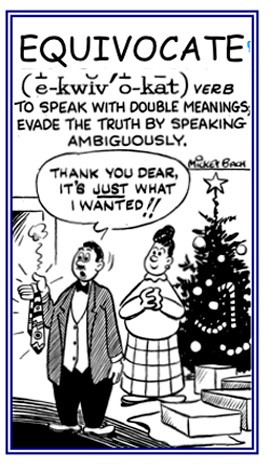Editor: This is part 2 of the blog on the BBC Question Time programme. Part 1 is here.
By Elena Ioannidou, Coventry University
Fresh Talk
Overlap occurs when one of the speakers interjects before the previous speaker has finished speaking. While competitive interruptions are usually accompanied by overlap, there is more to be gleaned than attempts to wrestle the floor. The exchange below brings some interesting facts to light:
1 FB: Dianne, I’m sure you want to respond to that 2 but I still haven’t heard 3 from Isabelle on the question 4 So, (.) a second vo[te, would it be anything= 5 IO: [Thank you, well, well, for once…] 6 FB: [=other than a democratic 7 catastrophe?]
Notably, IO begins her turn before FB has finished hers. IO does not need to hear the question, but is ready to assume her turn as soon as she has been selected to speak. This move suggests that IO is already familiar with the question and has perhaps rehearsed this.
Montgomery (2001: 403) finds that broadcast discourse is rarely authentic and spontaneous, but largely televised and rehearsed. Political interviews and discussions showcase this at times, since politicians and interviewers must be prepared for any difficult questions. Interviewers ask conflictual questions, where all possible replies threaten the interviewee’s face. Despite these questions, the interviewer needs to maintain neutral footing, a stance which favours neither side during the debate.
Maintaining neutral footing is usually achieved by attributing the question to someone else. Goffman (2003: 154) identifies three participation frameworks: the animator who literally utters the words, the author, who originally posed the question, and the principal, whose viewpoint is expressed through the question. FB and IO serve as the animators for the questions. They may or may not be the authors who originally came up with them, but they are most likely not the principals, as they are expressing the views of political parties.
However, the usual art of deflecting responsibility by attributing the question to a different author or principal is lacking in this exchange. Combined with the audience’s applause being synchronised with IO’s statement when challenging DA, the interviewer does not appear to maintain neutral footing. FB’s preference to skip connect to a previous question instead of letting DA address the audience questions, along with the competitive interruptions makes the interviewer’s neutral stance easy to question.
Equivocation Strategies
Conflictual questions, as described above, are a fundamental element of political discourse. But since all possible answers may threaten face, politicians tend to avoid direct answers and use equivocation strategies. In the following exchange, DA uses two of these strategies when faced with these questions:
3 FB: Actually, before you say that can I just say… 4 Jeremy Corbyn seems to be giving the impression of 5 wanting everything (2.0) but [have a second referendum. 6 DA: [>I’ve just explained to 7 you what our policies are=<]
In this question, DA implies that the question has already been answered. If a second referendum is part of their policies, then it stands to reason that Corbyn is not against it.
8 FB: =I know, but he doesn’t seem 9 terribly keen on it. 10 DA: It’s fine to have jabs at Jeremy 11 But let me just explain to you 12 What our policies are
In the second half of the adjacency pair, FB insists on the question in an attempt to probe DA further, which results in a more aggressive reply. This time, she attacks the interviewer, a strategy often employed by Thatcher and then repeats the same answer as in the first half.
Additional equivocation strategies are evident in this exchange:
18 DA: [Just] as a (.) point of information (.) 19 currently, we’re kind of-in the polls overall, 20 we’re kinda level-pegging (.) 21 We we[nt into- (.) 22 IO: [Six points behind. 23 DA: We wen[t- (.) 24 FB: [But you’re behind, Diane= 25 DA: =Yeah, but [<we went= 26 AU: [(laughing) 27 DA: =into [the la:st general election twenty points behind> 28 FB: [Definitely. 29 DA: and >Theresa May was convinced< 30 she was gonna smash us. 31 I believe (.) that if we could make up 32 twenty points in the last general election, 33 I believe we can win 34 >any forthcoming general ele[ction.<
IO’s question of how DA’s party expects to win despite their lacklustre performance in the polls is met with applause from the audience, which implies the question was successful at representing the principal behind it. DA responds by making a political point, the seventh strategy in Bull’s taxonomy. However, DA is not given a chance to respond to the simpler questions posed by the audience. Bull’s (2003: 593) quantitative research has found that politicians tended to reply to members of the public up to 73% of the time, whereas they equivocated 47% of interviewers’ questions. Questions from members of the public tend to cause fewer communicative conflicts, explaining the higher response rate.
Conclusion
Televised political interviews are rehearsed and do not represent ‘fresh talk’, but rather institutionalised discourse. FB holds special rights to the floor which she exercises to select the next speakers and holds more power in competitive interruptions, acting as the default speaker. This means that the turn-taking mechanism will almost certainly never devolve to the lowest rank where the current speaker may continue, as FB is tasked with probing or selecting another speaker if this happens. The negotiation of the floor is under her command. However, the lack of attributing conflictual questions to an author and the competitive interruptions bring the neutrality of the debate into question. DA’s response with equivocation strategies is expected, but the fact that she was not allocated a turn to reply to the public’s questions foregrounds the equivocation.
BBC Question Time, 17th January 2019 (about 40 min)
https://www.bbc.co.uk/iplayer/episode/b0byzx1j/question-time-2019-17012019
List of references
Bull, P. (2003) ‘Slippery Politicians’. The Psychologist 16(11), 592-595
Bull, P. (2003) The Microanalysis of Political Communication: Claptrap and Ambiguity. London: Routledge
Cameron, D. (2001) Working with Spoken Discourse. London: Sage Publications
Cribb, M. (2019) Institutionalised Discourse [lecture] module 210DEL, 29 January 2019. Coventry: Coventry University
Edelsky, C. (1981) ‘Who’s got the floor?’. Language in Society 10(3), 383-421 DOI: 10.1017/S004740450000885X
Grice, Paul (1975). ‘Logic and conversation’. Syntax and semantics. 3: Speech acts. New York: Academic Press.
Montgomery, M. (2001) ‘Defining ‘authentic talk’’. Discourse Studies 3(4), 397-405
Sacks, H., Schegloff, E., & Jefferson, G. (1974) ‘A Simplest Systematics for the Organization of Turn-Taking for Conversation’. Language 50(4), 696-735 DOI: 10.2307/412243
Selting, M. (2000) ‘The Construction of Units in Conversational Talk’. Language in Society 29, 477–517
Sidnell, J. (2016) ‘Conversation Analysis’. Oxford Research Encyclopedia of Linguistics, 1-19. DOI: 10.1093/acrefore/9780199384655.013.40
Stenstrom, A. (1994) An Introduction to Spoken Interaction. London: Routledge
Tsui, A. (1989) ‘Beyond the adjacency pair*’. Language in Society 18(4) 545-564 DOI:10.1017/S0047404500013907
Bibliography
Brown, G., Yule, G. (2012) Discourse Analysis. Cambridge: Cambridge University Press
Bull, P.E. (1998). Equivocation theory and news interviews. Journal of Language and Social Psychology, 17, 36–51.
Goodwin, C., Heritage, J. (1990) ‘Conversation Analysis’. Annual Review of Anthropology, 19, 283-307
Hutchby, I. (2006) Media Talk: Conversation Analysis and the Study of Broadcasting. Maidenhead: Open University Press.
Richards, K., Seedhouse, P. (1952) Applying Conversation Analysis. Basingstoke: Palgrave Macmillan
Schegloff, E., (2000) ‘Overlapping Talk and the Organization of Turn-Taking for Conversation’. Language in Society 29(1), 1-63




Leave a Reply
You must be logged in to post a comment.